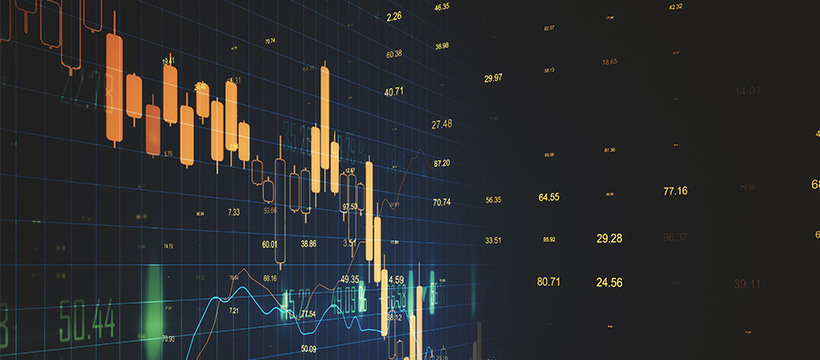Technical Analysis: The Right Mindset to Maximize Its Potential
November 21, 2019

Technical analysis is one of the disciplines that cannot be missing from a trader's agenda. In fact, it must be carried out as part of a routine, preferably on a daily basis. Unfortunately, in addition to being extremely important, technical analysis is also complex, fraught with pitfalls, and not at all easy to put to good use.
One of the reasons why the practice of technical analysis proves to be less effective than expected concerns the mental approach. If you don't act with the correct one, there is a concrete risk of wasting efforts, and therefore being left empty-handed with a lighter account.
In this article, we propose a brief overview of technical analysis and some indications about the right mental approach to apply to technical analysis.
Why technical analysis is important
First of all, it's good to provide an overview of technical analysis and describe the reasons that make it one of the most important activities for a trader. Technical analysis is the study of the chart aimed at identifying a "pattern", which in turn can help understand how prices will move. The pattern is actually the result of statistical models, based precisely on historical data.
The principle of technical analysis is that an asset tends to always behave according to dynamics, and that it will therefore react similarly to similar events. The tools for identifying the perpetuation of these models, or patterns, are indicators.
Not all indicators are equal, but each allows you to understand a piece of the market. It is up to the trader, based on the moment, the phase of the market, but also their strategy, to decide which indicators to use.
In theory, and fortunately often in practice, technical analysis is effective as it allows you to shed light on a market that is formally and substantially dominated by the interface. It's the tool that traders use to orient themselves.
There is no trader who does not practice technical analysis. Those who do not practice technical analysis, perhaps in its simplest variations, cannot frequent the market, and certainly cannot be said to be closer to gambling than to speculative investing.
Why technical analysis doesn't work
This is in theory. In practice, things can go quite badly. In fact, traders often complain of ineffective technical analysis, although they have the impression of having acted according to common sense and in a substantially correct way. The truth is that technical analysis is a multiple and varied discipline, to the point that some consider this term as a simple "umbrella" to indicate a set of analytical techniques that do not always have something to do with each other.
So it can happen that the trader performs the wrong variant of technical analysis, or simply one that is not suitable for the market phase, their strategy, or their trading style.
Often, however, technical errors are made without realizing it. Most of these, being unconscious, are actually determined by a bad mental approach, by erroneous perceptions, by counterproductive thoughts.
In the following paragraph, we will give an account of the right approach.
The right mental approach to technical analysis
Awareness of fallacy
One of the perspective errors that many traders make is to consider technical analysis as an infallible tool, if used with care. In this way, too much trust is placed and there is a tendency to ignore the risks, discrepancies, and details that can make the difference.
The right approach consists in being fully aware that technical analysis is not science, but statistics, so even in the best of cases, reality may not correspond to the forecast.
The extension of the horizon
The correct mental approach is also the most open one. That is, open to other analysis activities. In fact, technical analysis is not the only one. Once it has been ascertained that this is far from infallible, it is necessary to find other tools that can integrate it, and intervene in case it gives way to the complexity and uncertainty of the market.
This tool is fundamental analysis, i.e. the study of events external to the market, mainly economic and political, which affect prices. By predicting the outcome of such events, prices are predicted (or rather, indications about the future are drawn).
Although technical analysis and fundamental analysis are subject to a certain polarization of the trading community, they should be carried out together, as integrations, almost as if one acts as a counter-test for the other.
The benefit of the doubt
Adopting the right mental approach also means transforming positive thoughts into action. In this case, it means putting in place activities and practices to concretize the good intentions listed above. This essentially translates into a good habit: acting through tests and counter-tests, never trusting the data acquired during analysis, but subjecting it to verification through other tools.
Those who mainly practice technical analysis should use multiple indicators. Those who also practice fundamental analysis... The same. Only in this case, the counter-testing mechanisms should also involve technical analysis.




